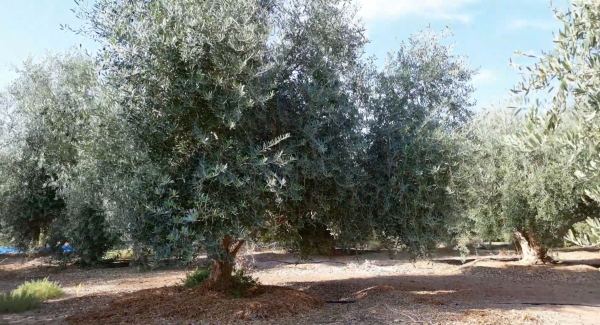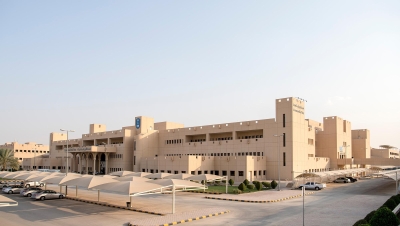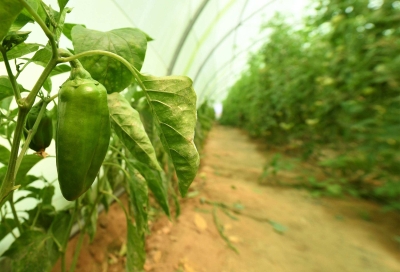
The olive tree (Olea europaea) is an evergreen tree from the Oleaceae family. It is native to the Mediterranean Basin, extending to southeastern Africa and southwestern Asia. It is also one of the three hundred plant species selected for landscaping natural sites in Riyadh, the capital of the Kingdom of Saudi Arabia.
Olive Cultivation in Saudi Arabia
The Olive Research Unit at the Camel and Range Research Center in al-Jawf, affiliated with the Ministry of Environment, Water, and Agriculture, has produced more than thirty varieties of olives popular in producing countries. Some of these varieties have shown high-quality productivity indicators. Olives are cultivated in regions located between latitudes thirty and forty-five degrees. The Kingdom is classified as one of the countries influenced by the Mediterranean climate. Historically, olive trees have been present in the northern provinces, such as al-Jawf, Tabuk, and Hail, as well as in some southern provinces, including al-Bahah and Aseer.
Olive growth thrives in a moderate, rainy climate during winter and hot summers. The optimal temperature for olive growth ranges between fifteen degrees Celsius and twenty degrees Celsius. Olive trees require between one thousand and two thousand chilling hours, where the temperature is below seven degrees Celsius, to stimulate flowering. Additionally, effective temperatures of approximately 3,500 degrees Celsius are needed for early-maturing varieties and five thousand degrees Celsius for late-maturing varieties to achieve fruit maturation and oil accumulation.
The Olive Research Center established a genetic collection at the beginning of 2002, including popular olive varieties from olive-producing countries. Nine of these varieties were selected for their high productivity and quality. The center produces seedlings of superior olive varieties known for high-quality yields, which are sold at symbolic prices to farmers in olive-producing regions. Additionally, four experimental olive fields were set up in Tabuk Province, Hail Province, Tabarjal Governorate, and al-Qurayyat Governorate in al-Jawf Province.
The agricultural utilization of olive trees has been successful in several regions of Saudi Arabia, particularly in al-Jawf Province, where olive cultivation began in 1980 and intensified in 2007. The number of olive trees reached 1,600 trees per ha. By 2023, the total number of olive trees in Saudi Arabia reached approximately twenty-five million, distributed across 12,500 farms and 3,500 olive projects. These produce over 150,000 t of table olives annually and more than 18,000 t of olive oil, accounting for 67 percent of the total olive oil production in Saudi Arabia. The province also hosts the annual al-Jawf International Olive Festival.
According to a 2018 report by the General Authority for Statistics, the number of olive trees in Tabuk was 932,943, of which 812,319 were fruit-bearing, producing 48,544 t of olives. Of these, 45,938 t were sold, representing 14 percent of the Kingdom's total olive production. In 2021, Tabuk hosted its first Olive Festival, organized by the regional branch of the Ministry of Environment, Water, and Agriculture, with the participation of twenty olive farmers as exhibitors.
Among the regions where olive cultivation has succeeded is al-Bahah, where a farmer successfully planted four thousand olive trees on an area of 150,000 m² in the Bahr Center along al-Aqiq Road. The farm produces twenty-two olive varieties and annually yields more than ten t of olive oil in addition to its olive fruits. In 2024, Aseer Province launched an olive tree planting project.
Characteristics of the Olive Tree
The olive tree can reach a height of six to nine m, with its crown spreading six to eight m. Its dense crown gives it a distinctive appearance. The leaves are entire-edged, lance-shaped, green on the upper side, and silvery-green on the underside.
Olive fruits are renowned and significant on various levels, and the tree is also used as an ornamental feature in certain urban locations.
Olives propagate through stem cuttings, grafting, and seedling transplantation. The olive tree is drought-resistant and tolerant of urban environments, requiring minimal care. However, it is highly sensitive to waterlogging. Regular pruning can improve the density of its crown. The tree does not have specific soil requirements and can withstand temperatures as low as minus ten degrees Celsius.
Despite its resilience, olive trees are susceptible to scale insects and crown-galling pests. Wilt caused by fungi and black-scale insects is among its major issues.
Ensuring minimal relative humidity helps achieve successful afforestation with olive trees.
Uses of the Olive Tree
Olive trees are suitable as shade trees. In addition to the high nutritional value of their fruits, they serve as aesthetic elements when planted individually, in groups, or in rows, enhancing the design of public spaces and parks in urban areas.
Olive trees can also grow in small rooftop gardens and planters, adding a natural touch reminiscent of steppe landscapes to the site.
Related quizzes


